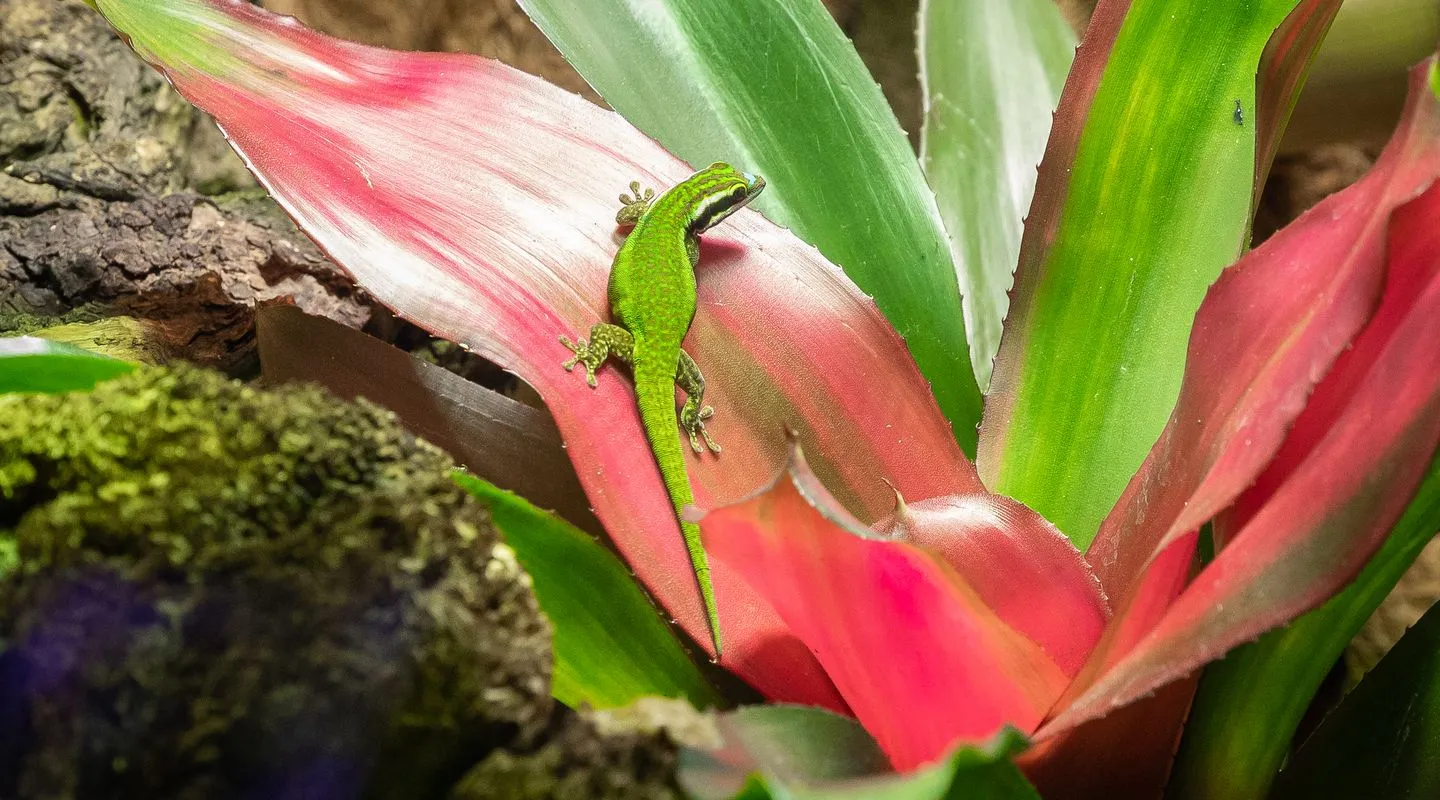Sexual maturity occurs when the gecko is two years old. The female lays a clutch of two eggs once or twice a year, which hatch after 62 - 104 days. When born, baby geckos are less than 2 cm long.

Reptiles and amphibians

Identity card
Species endemic to Reunion Island
The Manapany gecko is a small reptile endemic to Reunion Island in the Indian Ocean.
10 to 13 centimetres and weighs only 10 grammes.
The gecko feeds on pollen, nectar, insects and fruit pulp.
Sexual maturity occurs when the gecko is two years old. The female lays a clutch of two eggs once or twice a year, which hatch after 62 - 104 days. When born, baby geckos are less than 2 cm long.

The gecko feeds on pollen, nectar, insects and fruit pulp.
Endemic to Reunion Island in the Indian Ocean, the Manapany day gecko Phelsuma inexpectata is found in the south of the island, around the territory of Saint-Joseph in a place called Manapany where the largest population is found. The area occupied by the gecko is 16 km². This gecko is a diurnal, arboreal reptile that lives in vacoas, which are plants that look like palm trees.
It is a small animal, measuring between 10 and 13 centimetres and weighing only 10 grammes. Adult females are smaller than males.
Both males and females are characterised by red spots along their long bodies, and red, white and black stripes running from the head. Males have more contrasting colours and a longer, thinner tail than females.
The Manapany day gecko is probably a pollinator of several native plant species.
Predation by invasive species, reptiles, birds or mammals is a threat to the survival of the species as could be competition with other gecko species (Phelsuma laticauda and P. grandis).
The IUCN considers this species to be "critically endangered".
Changes to its habitat and urban expansion are other threats to this lizard, along with climate change. In fact, both the increase in temperature and the decrease in rainfall in this part of the island could affect the gecko population and its food resources. The number of geckos was estimated at between 5,000 and 10,000 individuals in 1995; in 2011, a new study estimated the population at between 3,000 and 5,000 individuals.
MANKIND AND SHORES
